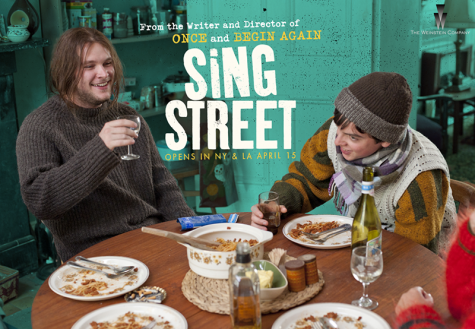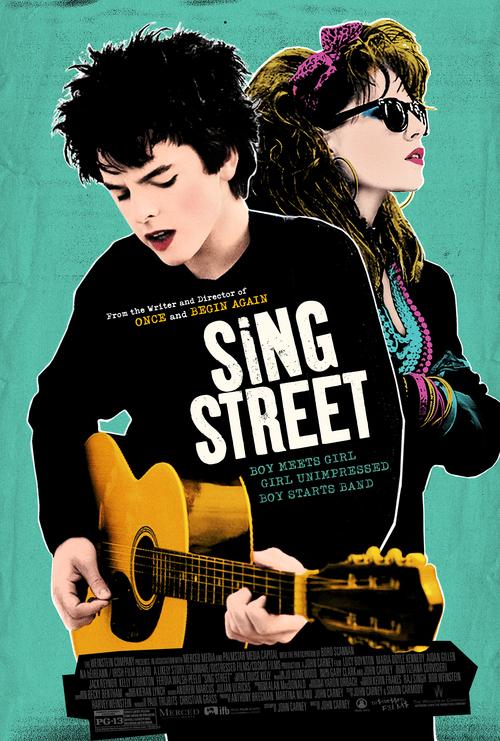Review: Indie Flick “Sing Street” Finds Strength Through Music
If one takes time to close her eyes while watching a movie, despite the absence of visuals, a story filled with emotion and color is illustrated through the musical score. In its plot revolving around music, the recently released film “Sing Street” directed by John Carney, encapsulates nuances of day-to-day life through a rock band assembled by the teenage protagonist, Conor (Ferdia Walsh-Peelo).
Set in 1980s Dublin, Ireland, Conor finds himself devoid of normalcy as he faces an array of hardships both at home and in school. At the root of his challenges is his financially struggling and disjointed family. His constantly bickering parents, who depend on alcohol and cigarettes to heal their anxiety, conclude that a change of school for Conor is crucial to the maintenance of their familial unity and well-being.
Aware of his parents’ angst, he complies. Accustomed to an orderly, prestigious Catholic school, Conor arrives at his new school, which is diametrically opposite to the one he previously attended. Here, Conor proves to be the anomaly: he knows where France is on the map and does not feel the urge to disrespect his teachers.
However, his failure to conform to these newly introduced norms makes him a new target to a multi-layered bully named Darren (Ben Carolan). Feeling outcast, Conor leaves his first day physically beaten up and seemingly hopeless, until he sees a young model, Raphina (Lucy Boynton), standing across the street, with whom he becomes immediately enamored. Hoping to impress her, Conor falsely claims to be the lead singer of a rock band in need of an actress for a music video. Open minded, she agrees to listen to a track and make her decision accordingly. Conor, in total desperation, given his blatant lie to Raphina, gathers a few friends, including other outliers from his school. Together, they, with the help from Conor’s brother, a rock aficionado, form the band Sing Street.
 Photo by singstreetmovie.com
Photo by singstreetmovie.com
Raphina, impressed with the band’s first original number, agrees to assist the young musicians, which creates strong friendships amongst the group, not to mention a newfound identity and a willingness to take risks. Taking on a slightly more stereotypical rock-band look, including makeup, the group becomes more socially vulnerable and takes pride in their new identities as musicians. Conor arrives at his strict uniform-enforcing, yet “rebel-filled” school with dyed hair and eyeliner. The administration, angered by his nonconformance with school policy and desire for individuality, meets him with violence. Seeking a distinct, yet accepted identity, Conor grows greatly in independence and self-assurance.
Despite the relatively common plot, the simplicity in approach makes this film extremely unique. The lack of reliance on prominent visual effects in combination with the complex characters makes Conor’s journey much more relatable, and thus extremely engaging.
This movie, unlike so many, places an emphasis on highlighting the many facets of one’s experiences, both positive and negative, making it feel much more holistic. For example, this film refreshingly does not merely point fingers and perpetuate a clear “bully or victim” mentality. Instead, it reveals many different aspects of Darren’s life, creating a greater perspective. This outlook on his character provides the audience with an opportunity to reflect on how individuals so often jump to conclusions or act accordingly to preconceived notions.
It was amazing to watch this thought-provoking film’s more relatable depiction of daily life. Causing an amalgamation of emotions ranging from laughter to tears, the one thing that remained constant, like in life, is its underlying hopeful tone regardless of what one is to endure.

